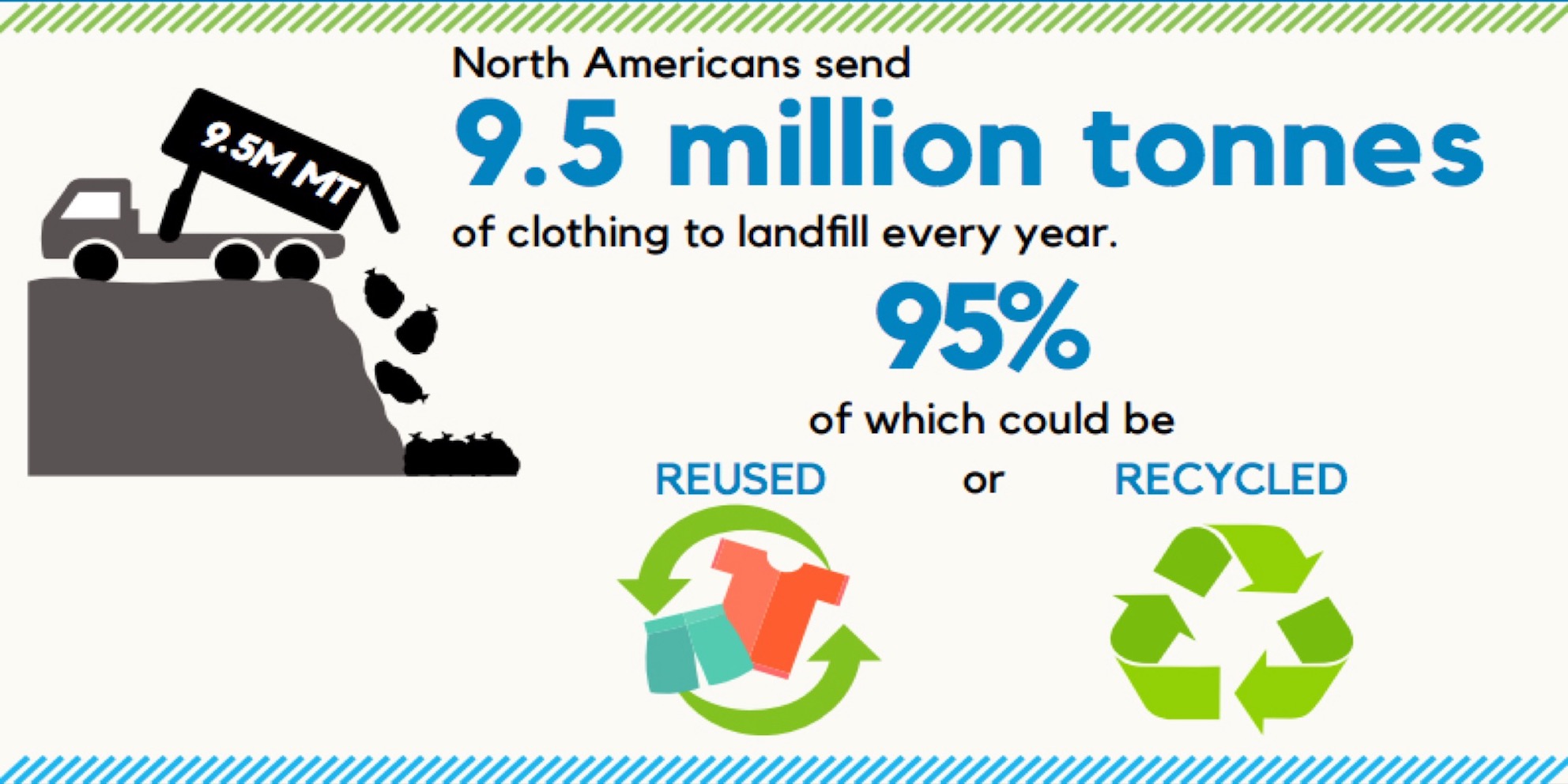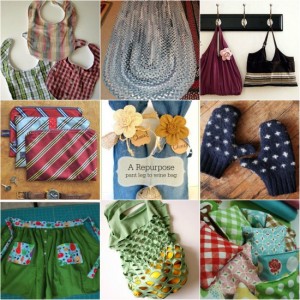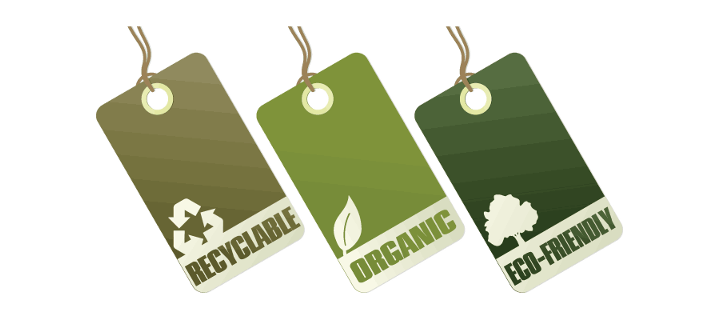Slow fashion is a movement towards mindful manufacturing, fair labour rights, natural materials, and lasting garments. Buying a garment from a responsible brand ensures that you have responsibility over your personal style, are purchasing a quality product, and are protecting those that need it most. By disrupting the status quo, we have the power to change things. When we buy better, we send the market signals to change the system for good.

Image courtesy of Waste Reduction Week in Canada.
Here are some ways you can become a more conscious shopper.:
1. Reduce
Reduce the amount of clothing you purchase. On average, North Americans buy 64 items of clothing per year, that’s a little more than one piece of clothing per week. According to Fashion Revolution, consumers purchase 400x more clothing per year than we did in 1980. Buy less and slow down fashion consumption, buy quality and value not cost, and choose your needs over your wants. This is a huge step towards reducing wasteful consumption.
2. Reuse
Shopping at second hand thrift, consignment, and vintage stores are a great way to add new clothes to your wardrobe while ensuring used garments don’t end up in a landfill.
3. Recycle
In Canada, we have new laws about recycling textiles. We are encouraged to place everything into donation bins since there is such a small market to recycle them with new technology. The more we as consumers act on this, the more we will push government to create better technology to recycle.
When shopping, be conscious of packaging and hang-tags that are recycled or recyclable. Better yet, refuse to purchase garments that are over-packaged and refuse a bag with your purchase, as most cannot easily be recycled.
4. Repurpose
Repurpose or “upcycle” is a way of transforming an original item into something different. Not sure what to do with that old t-shirt? Turn it into a bag or a scarf – without sewing!

5. Rent
Nowadays, you can keep your clothes and accessories in this closed loop/sharing economy by lending, sharing and swapping with others. It’s a great way to reduce your fashion footprint and promote this sharing economy to grow.
6. Repair
Fast fashion has created a huge “throw away” culture. Why would anyone repair anything if they only paid $15.00 for it and can buy another one for only $15.00!? That’s what fast fashion has done to society – cheapened fashion to the point that buying is cheaper than fixing.
If we purchased less fast fashion and bought more quality garments that mean more to us, perhaps we will make more effort to care for our possessions and help extend the life of our favourite pieces. So the next time there’s a hole in your t-shirt, try stitching it, mending it or finding a tailor to do the job for you – instead of throwing it out!
7. Research
As conscious consumers, it is up to us to make a difference and therefore need to stay educated with the things we’re buying. Instead of impulsively consuming, next time you want to buy something, do some research to see how the company is operating. Once you’ve done your research you can feel good supporting the company that aligns with your values!
Roughly 70% of clothing that we throw away have damages such as colour fading, stains or shrinking. This could be avoided with better laundering and understanding of care labels. Research ways to remove stains, proper laundering techniques for textiles, or how to dry your clothes to use minimal energy. All of these will help your loved clothes last longer.
Want to know more about sustainability? Check our articles about Toronto Fashion industry initiatives and the latest runway of the Vegan Fashion Week!





